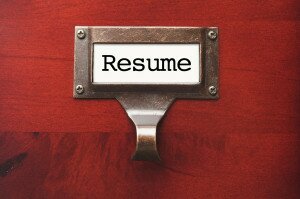Standing Out With Your Resume and Cover Letter
Your resume is one of the most valuable tools in your job-seeking arsenal. Make the right impression by following these simple steps.
Before sending your resume, review each point and ask yourself, “Does this add value?”

When you’re looking for a job, your resume is your ticket of entry at your target companies — provided it is well-crafted. The problem for many people is that it’s not easy to put together a document that will capture a hiring manager’s interest.
Fortunately, you don’t need a magic formula to create a strong resume and cover letter. But if you decide to write on your own, here are some tips for showcasing what you can offer a potential employer.
Choosing a resume format
Each of the three most common resume formats — chronological, functional and combination — is appropriate for certain situations and less so for others. By choosing the best format for each opportunity, you maximize your chances of being invited for an interview.
Chronological. A chronological resume is the most common type of resume and the most popular with hiring managers. In a survey by Robert Half, 75 percent of executives said they prefer this format. With this type of resume, you list your work experience in a reverse-chronological sequence, the most recent first. The principal advantage of this format is that it gives employers exactly what they’re looking for: an easy-to-follow snapshot of your work experience and professional accomplishments.
Functional. A functional resume is organized according to your skills and other attributes, as opposed to your work experience. Although this format can be beneficial in certain very specific situations — if you are re-entering the workforce after a long absence, for instance — you run a high risk that interviewers may find the layout confusing and hard to follow.
Combination. A combination resume brings together elements of both a chronological and functional resume. It showcases your skills and accomplishments and features an abbreviated version of your work history, including dates of employment and the names of companies you’ve worked for. Because of this, a combination resume can be an effective way to emphasize your skills without obscuring your work history. Just keep in mind, though, that most employers still prefer a traditional chronological resume.
Zeroing in on your targets
Rather than creating a standard one-size-fits-all document that you submit to every company that interests you, tailor your resume to each opportunity. Use the job ad as your guide, emphasizing your abilities and background that most closely match what the company is looking for. This may mean placing more focus on a certification you possess and your “strong presentation skills” for one prospective employer, while playing up your “self-directed” nature and “proven ability to be effective with minimal supervision” for another.
Determining length and what experience to emphasize
A Robert Half survey suggests that the “keep-your-resume-to-one-page” rule may be on its way out. While more than half (52 percent) of respondents said a single page is the ideal length for a staff-level resume, 44 percent preferred two pages. That compares to 25 percent polled a decade earlier who cited two pages as the optimal resume length; 73 percent of respondents preferred a single page at that time.
While today’s employers may be more receptive to longer resumes, you should be careful not to go overboard. Document length should ultimately be determined by the depth of your experience. If your career spans 20 years and includes positions with increasing responsibility, don’t be so concerned about brevity that you gloss over your credentials. On the other hand, don’t make your resume longer than necessary to appear more qualified.
There’s no need to give equal billing to each chapter of your work history. Instead, emphasize your most recent and relevant experiences and skills. If you are trying to make a career transition (you want to move into a new area or return to a previous type of work), you may not want to emphasize your most recent work experience, however. Instead, list it briefly, but give greater weight in your resume and cover letter to past positions that better showcase your transferable skills.
It’s Work Even if You’re Not Paid
“Experience that students include on their resumes should not be limited only to paid employment. Any volunteer work, including participation in Enactus, that is relevant to the position you’re applying for should be featured prominently on your resume as part of your “Work Experience.” Don’t reduce volunteer work to just one line at the bottom of the page. Students today gain work experience far beyond the borders of a classroom, and Enactus plays a huge part in developing skills necessary for success. Emphasizing leadership positions, accomplishments and any significant impact you have had on the community or on campus will help paint a picture of the skills that you bring to an employer. If you have been heavily involved with extracurricular activities, you can list these under an “Activities”’ heading, but be selective about what you include.” – Maura Quinn, Liberty Mutual Insurance
Clearing the cluttering
Instead of describing every task you performed in previous jobs, write a one- to two-sentence overview of your role, followed by a bulleted list of your most important duties and noteworthy achievements.
At the same time, don’t muddle your message by cluttering your resume with extraneous personal information. Many job hunters meander off track by including hobbies, interests and other biographical tidbits that have little or no relevance to their professional pursuits. Before sending your resume, review each point and ask yourself, “Does this add value?” If the answer is not an emphatic yes, delete that information or recast it in more meaningful terms.
Using keywords
Many resumes are first evaluated by computer programs that scan the documents for keywords from the job ad. You can help your resume make the cut by incorporating these terms, assuming they accurately describe your skills and experiences. For example, if the job ad seeks someone who is experienced in billing, collections and payroll, consider changing your wording from “experienced in all aspects of accounting and financial management” to specific mentions of these areas.
Remaining error-free
Three out of four (76 percent) executives surveyed by our firm said just one or two typos in a resume would remove applicants from consideration for a job; 40 percent said it takes only one typo to rule someone out. With computer spell-check so readily available, there’s no excuse for submitting a resume full of typos or misspellings. Even with this feature, though, there are certain types of errors that can go undetected. The lesson: Be sure to also proofread your document multiple times (and ask a friend to take a look, too) to make sure it’s error-free.
E-mailing and posting online
Thanks to the Internet, you can distribute your resume more easily and widely than ever, but there’s a chance that something will go awry if you’re not careful. When applying for a position through a company’s website or online job board, make sure you’ve attached the right document. When e-mailing your resume, paste it into the body of the message and include it as either a Word file or PDF attachment, unless the job posting requests another method of submission.
Also remember to use a professional e-mail address. Hiring managers won’t take you seriously if you ask them to reply to [email protected], for instance. If necessary, set up a new e-mail box that uses your name.
Considering the case for a cover letter
Some people feel that including a cover letter with their resume is no longer necessary. But you may still want to make the effort. In a Robert Half survey, 86 percent of executives polled said cover letters are valuable when evaluating job applicants.
Experienced candidates may find that they don’t need a cover letter to promote their skills to prospective employers. But this document can be invaluable for entry-level professionals or those who seek a career change. A thoughtfully written introductory letter allows you to go into greater detail about the unique skills and qualifications that make you the best fit for the role.
These tips can help you create a cover letter that’ll make a hiring manager want to learn more about you:
Keep it brief. Your cover letter should be concise. Keep it to two to three paragraphs.
Customize the content. Like your resume, it’s important to target your cover letter to each job opening. Determine which of your accomplishments are most relevant by looking at the job posting.
Avoid rehashing your resume. Look at your letter and resume as separate but related documents. They should complement one another without being repetitive.
Expand upon one or two key points from your resume to better key into the potential employer’s needs.
Address any concerns. The cover letter also is a place to explain anything that might prompt a question from a hiring manager, such as gaps in employment. Briefly explain why you were out of work and, more important, what you have been doing since then to keep your skills up-to-date.
Be web savvy. When applying online for a position, paste your cover letter into the body of the e-mail message you send to the hiring manager or into the appropriate field on online applications.
Putting your best foot forward
As you prepare your resume and cover letter, keep in mind that they are not just summaries of your skills and experience but also the basis of a first impression for a hiring manager. Even well-crafted ones may not assure you of a job interview, but documents poorly prepared will almost certainly work against you. It’s worth investing the time and effort to ensure your resume and cover letter showcase you and your skills in the best possible light.
Robert Half is the world’s first and largest specialized staffing firm with a global network of more than 350 offices worldwide. For more information about our professional services, please visit www.roberthalf.com. For additional career advice, follow us on Twitter at www.twitter.com/roberthalf.



